When you’re in Japan, trains are one of the main ways to get around. Here’s a complete guide of things you should keep in mind during a train journey, from how to buy tickets to manners you should respect on board and helpful phrases in Japanese for when you need help.
Recommended Transit Apps

Japan is blessed with one of the most developed railroad networks on the planet, which is tremendously convenient. On the other hand, the sheer number of train lines that weave into each other tends to bewilder newcomers. Many a tourist or new resident throw up their hands at the complexity of Japan’s railway networks.
That’s why you need a transit app. Just input your departure and arrival stations, and the app will figure out the shortest and most convenient route. They can also tell you when to depart if you need to arrive at a certain time. These apps can be lifesavers!
Here are three transit apps that the Japanese swear by.
▼Jorudan (ジョルダン)
https://www.jorudan.co.jp/norikae/ (Japanese)
https://world.jorudan.co.jp/mln/en/?sub_lang=nosub (English)
▼NAVITIME (ナビタイム)
https://www.navitime.co.jp/ (Japanese)
▼Yahoo! Transit (Yahoo!路線情報)
https://transit.yahoo.co.jp/ (Japanese)
How to Buy Train Tickets
You have two options for boarding: buy a ticket to your destination, or use your IC card. Let’s start with buying tickets.
1. Look for Ticket Machines Near the Faregates

You can buy tickets at ticket machines, located near the faregates. But beware: not all machines are the same. You should look for machines marked きっぷ (“Tickets”), like the machine on the right is in the photo. At machines marked only as チャージ専用 (“Charge”), like the machine on the left, you will only be able to charge your IC card (more on this later).
2. Press the きっぷ Button

Start by pressing the きっぷ (“Tickets”) button on the touch panel. Depending on the railroad company, it may be possible to select the display language, like at the top right in the above photo, so those of you who’d prefer to avoid doing this in Japanese can switch to English or another language.
3. Select Your Fare

After you select きっぷ, you’ll get a screen like the one above, showing a series of prices. Look at the giant route map above the ticket machines, find your destination station, see how much it costs to get there, and pick the appropriate fare on the screen.
4. Payment


After selecting your fare, pay through the coin slot, and the ticket will be printed out. Make sure you don’t forget your change! Note that there are some railroad companies that allow you to pay by credit card. There are also cases where, even if the ticket machines only accept cash, you can go to the ticket window and buy a ticket with a credit card there. To find out whether your station accepts credit cards or not, please consult with a station attendant.
How to Use a Transportation IC Card

You can find transportation IC cards in each region of Japan, such as the PASMO and Suica cards that are dominant in the Tokyo region or the ICOCA cards used in the Kansai region (Western Japan). So long as you keep your card charged, you can spare yourself the hassle of having to buy a ticket each time. These cards also generally function as e-money, meaning that you can use them to pay at certain convenience stores, supermarkets, and vending machines. You can buy transportation IC cards at ticket machines or ticket offices. They require a 500 yen deposit.
1. Charge Your IC Card at a Ticket Machine

You can charge your IC card at a ticket machine. It works a lot like buying a ticket. You can use either of the machines shown above.
2. Insert Your Card or Place it at the Appropriate Spot


Depending on the machine, you may have to place your IC card at a designated spot, or insert it, as seen on the above images. Once you place your IC card, make sure not to move it until the machine tells you to.
3. Select the Charge Amount

Once you place/insert your card, you will get the above screen where you can select the amount to charge your card with. Pick the amount, keeping in mind how much is still left on your card. Some machines even allow you to pick a charge amount in units of 10 yen. Once you’ve chosen the amount, insert the cash and the charging will be complete.
Passing Through the Faregates
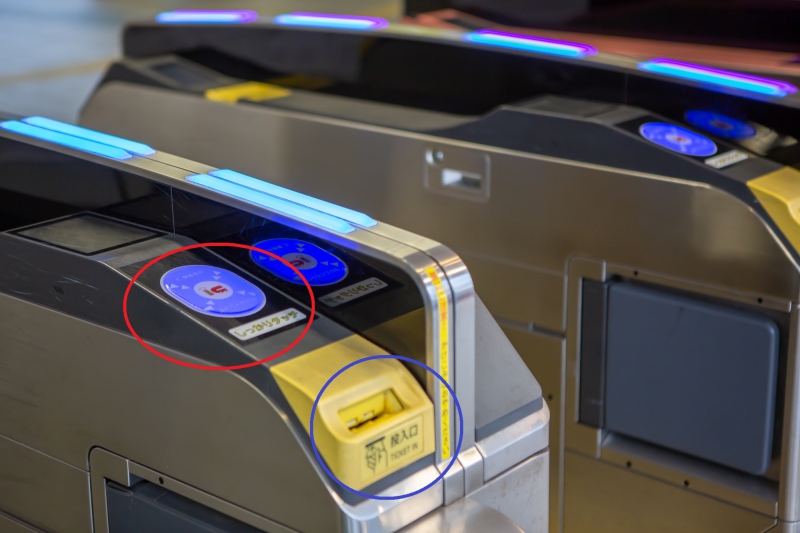
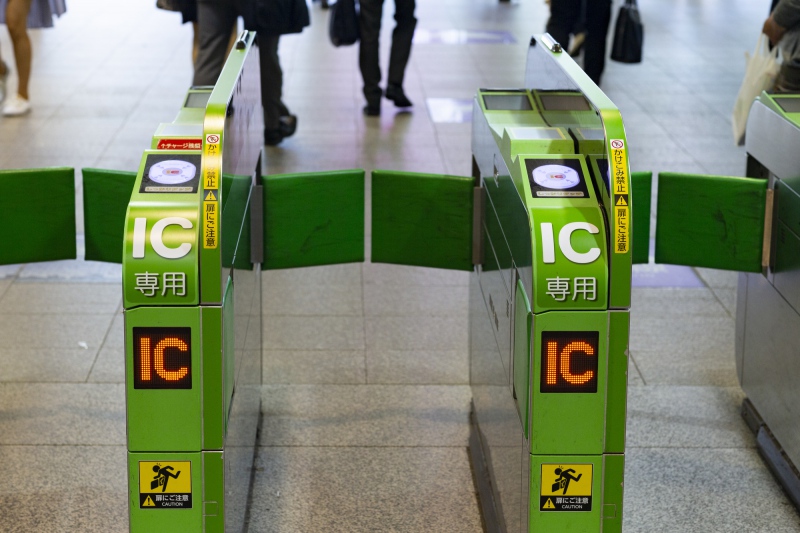
Once you’ve bought your ticket or charged your IC card, head to the faregates that lead to the platforms. In Japan, there are two types of faregates: those where you can use both tickets and IC cards, and those that only accept IC cards (both shown above). With the former, you can tap the card on the spot marked on the photo with a red circle or insert your ticket into spot marked blue. *More on this process later.
▼Passing Through With a Ticket
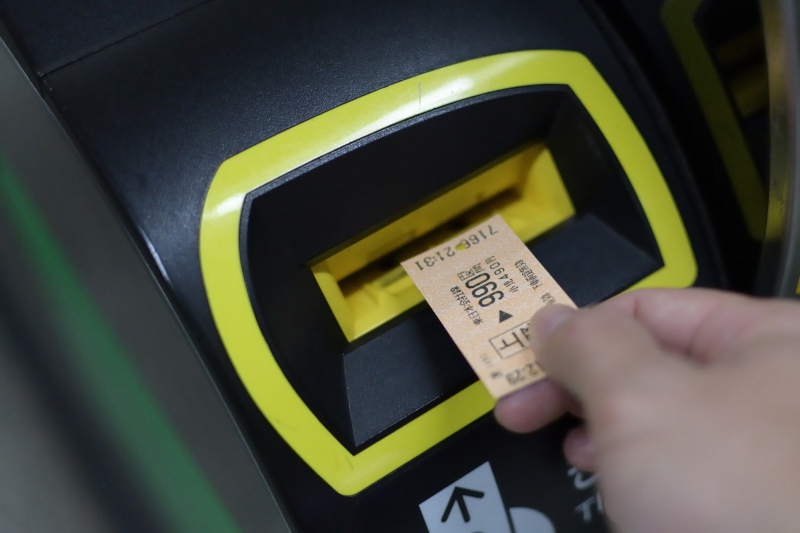
Insert your ticket in the slot. It’ll be sucked into the machine and the gates will open. If your ticket is bent or scratched, the machine may not be able to read it, in which case it’ll be returned to the original slot. If this happens, you should go to the counter at the side and explain your situation to the staff. (If there is no staff nearby, there will be an intercom for you to talk into.)
Once you’re through, don’t forget to remove your ticket from the other side of the machine! Once you’re at your destination, you’ll need to feed the same ticket into the faregates there, so make sure you don’t lose it. Once you insert your ticket into your destination faregate, it will not come out the other side.
▼Passing Through With an IC Card

When using an IC card, tap it firmly on the card reader, wait for a beep, and pass through the gates once they open. Do the same at your destination station. If there isn’t enough money on your card, or if the sensor has trouble reading your card, there will be an error sound and the gates will not open.
If You Can’t Leave the Faregates Due to Insufficient Funds…
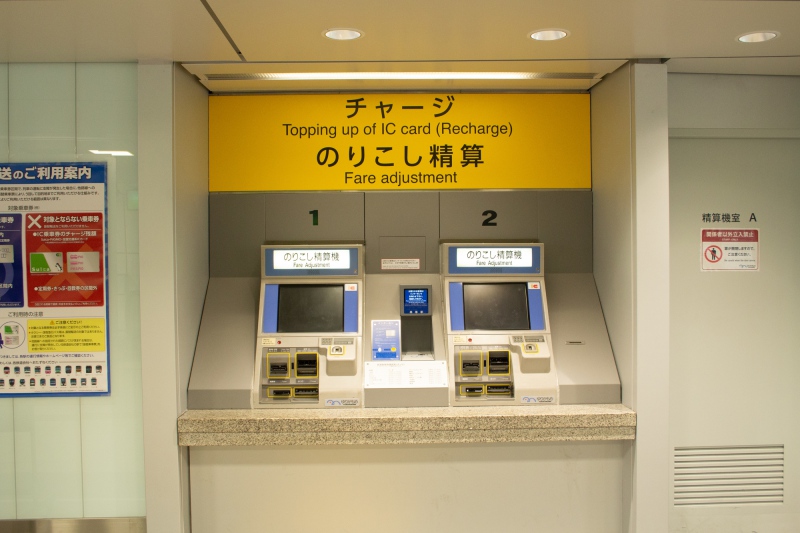
As you get off the train and head towards the faregates, you may discover that there isn’t enough money left on your IC card or that your ticket is no longer enough to cover the trip because you changed your destination at the last minute. In these situations, you should head to the “Fare Adjustment” machines near the faregates and either charge your card or pay the fare difference. Now you can pass through the faregates with no problem.
Important Phrases at Stations or Aboard Trains
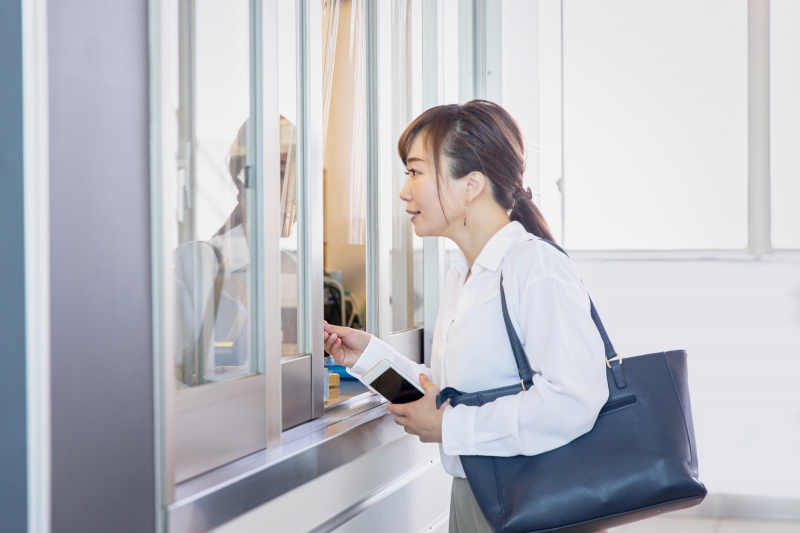
・切符はどこで買えますか?(Kippu wa doko de kaemasuka?)
“Where can I buy a ticket?”
・切符の買い方を教えてください。(Kippu no kaikata o oshiete kudasai)
“Could you tell me how to buy a ticket?”
・〇〇駅に行きたいですが、どうやって行けばいいですか?(〇〇eki ni ikitai desuga, doyatte ikeba ii desuka?)
“I would like to go to 〇〇 Station; how can I get there?”
・〇〇行きの電車は、何番ホームですか?(〇〇iki no densha wa nanban homu desuka?)
“Which platform does the train bound for 〇〇 depart from?”
・この電車は〇〇駅へいきますか?(Kono densha wa 〇〇eki e ikimasuka?)
“Is this train stopping at 〇〇 Station?”
・〇〇駅までは、あと何駅ですか?(〇〇eki made wa ato nan eki desuka?)
“How many more stops until 〇〇 Station?”
・〇〇口はどこですか?(〇〇guchi wa doko desuka?)
“Where is Exit 〇〇?”
8 Japanese Train Manners to Keep In Mind
1. No Food or Drink

While candy, gum, and water to stave off heatstroke are acceptable, you should generally avoid eating or drinking on board, especially things with a strong smell or things that may cause a mess.
2. Smoke Only in Designated Spots

Smoking is prohibited within stations and aboard trains. Some stations have designated smoking areas, so make sure to head there if you need a smoke.
3. Wait in Line for the Train
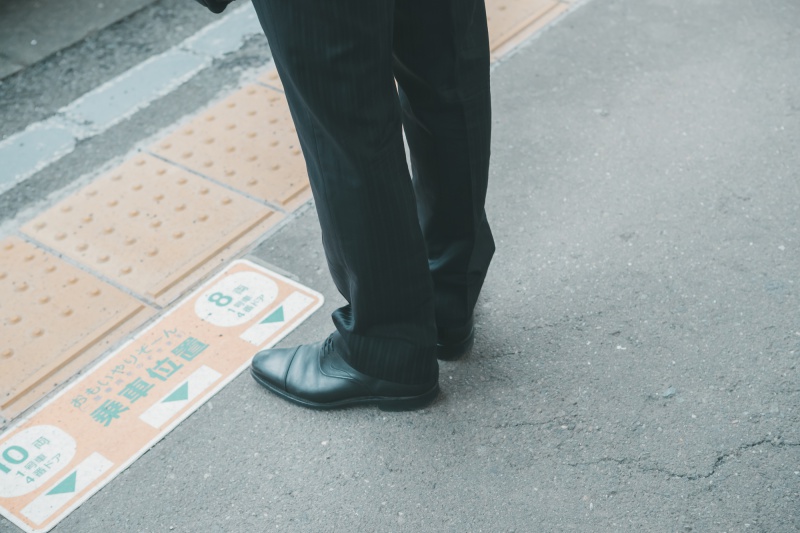
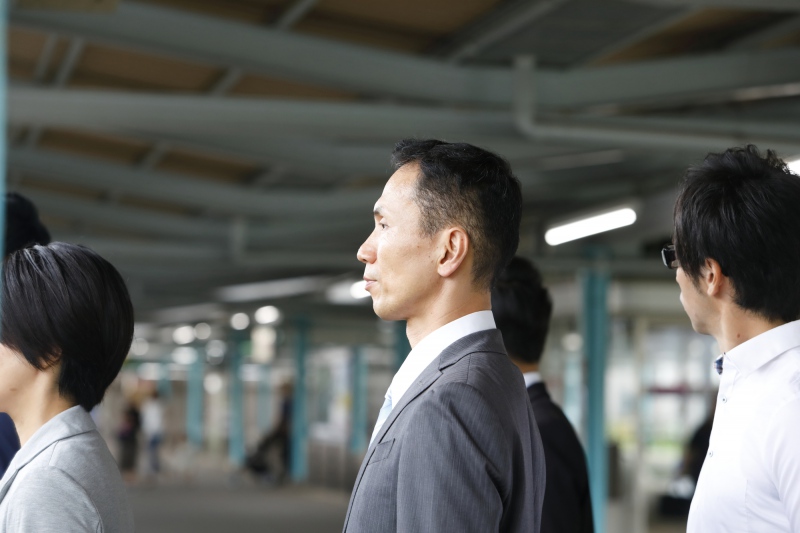
Waiting in line is very important in Japan. When waiting for your train on the platform, look for the markings on the ground that show you where to stand and form a line behind them.
4. Wait for Passengers to Get Off First
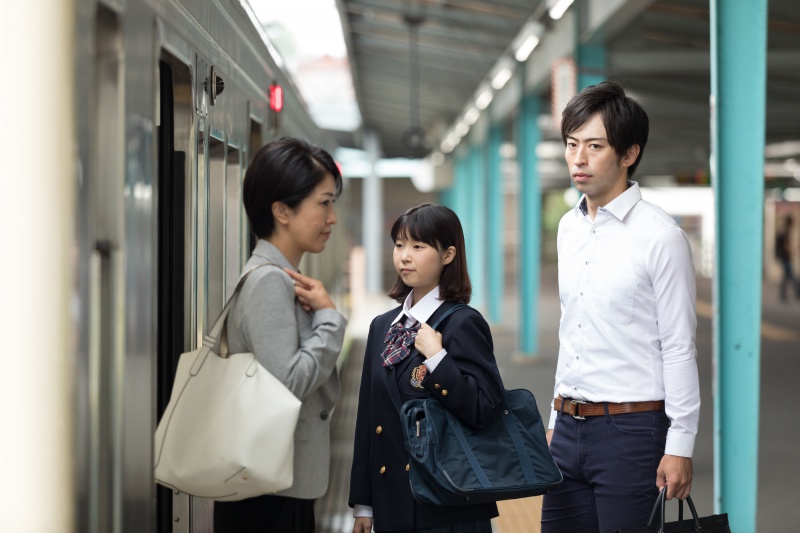
Once the train arrives, wait for passengers to get off the train before starting to board. Rather than standing directly in front of the door, it’s courteous to wait a bit off to the side.
5. Give a Priority Seat to Those Who Need It

Each train car includes priority seating, which should be given to those who need it, including the elderly, the disabled, or pregnant women. Of course, even in other areas of the car, you should give your seat to those who need it more than you.
6. Look Out for Women-Only Cars

Depending on the train company, you may encounter a women-only car at certain times of the day. These cars, and the parts of the platform where you board them, are marked as “Women-Only Cars” (女性専用車). They are generally in effect during the morning rush hour (around 7:00 am – 10:00 am) on weekdays. Sometimes, exceptions are made for boys of elementary-school age or below and caregivers.
7. Keep Quiet Inside the Car
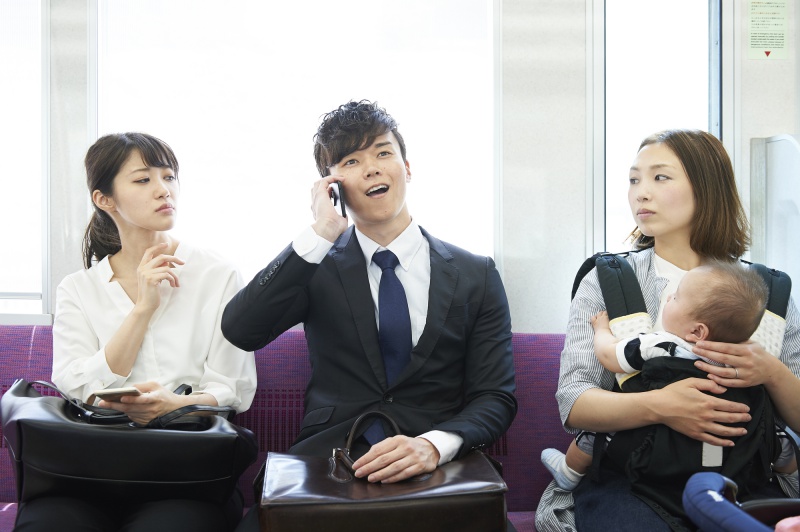
Keep your cell on silent mode, and refrain from talking on the phone. Refrain from speaking loudly in general and avoid any other conduct that may inconvenience those around you.
8. Walk on the Left

Most hallways and staircases have markers showing which side you should walk on, but as a general rule, you should walk on the left at Japanese train stations. Large numbers of people can pass through a given area at once, so it’s important to follow these rules to prevent everyone from bumping into each other.
This has been an explanation of how to board trains in Japan as well as the rules and manners you should respect while on board. Trains are a crucial and convenient way of getting around in Japan, so please take these rules to heart and ride away!
If you want to give feedback on any of our articles, you have an idea that you’d really like to see come to life, or you just have a question on Japan, hit us up on our Facebook!
The information in this article is accurate at the time of publication.

